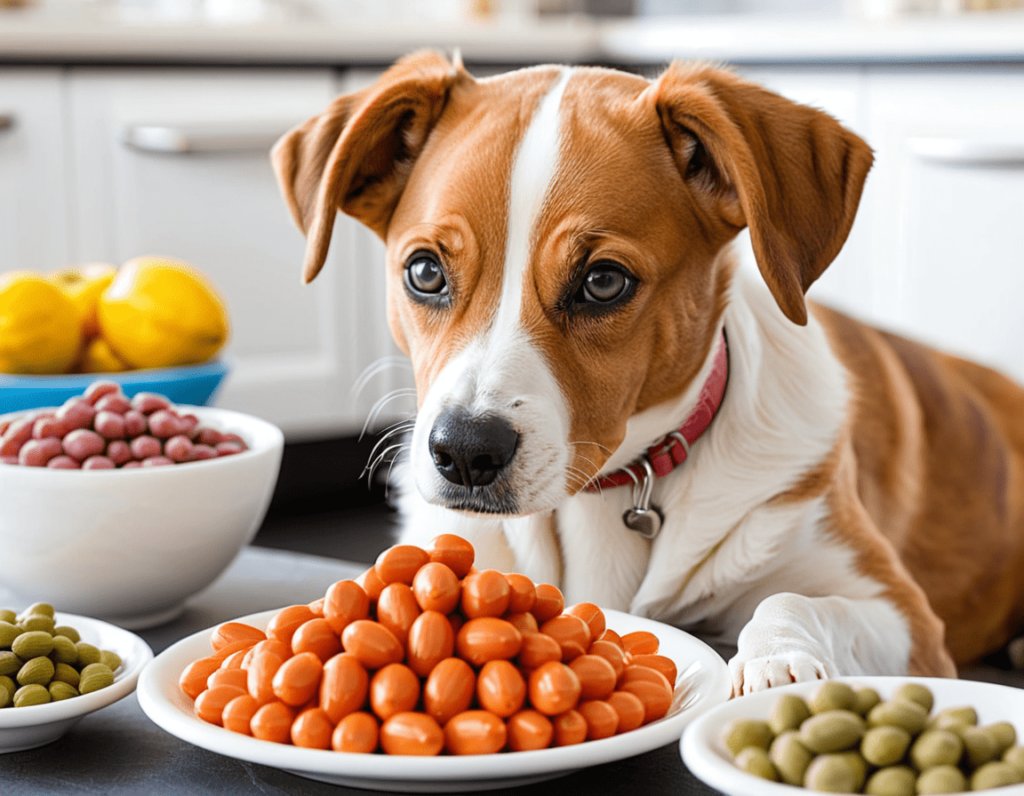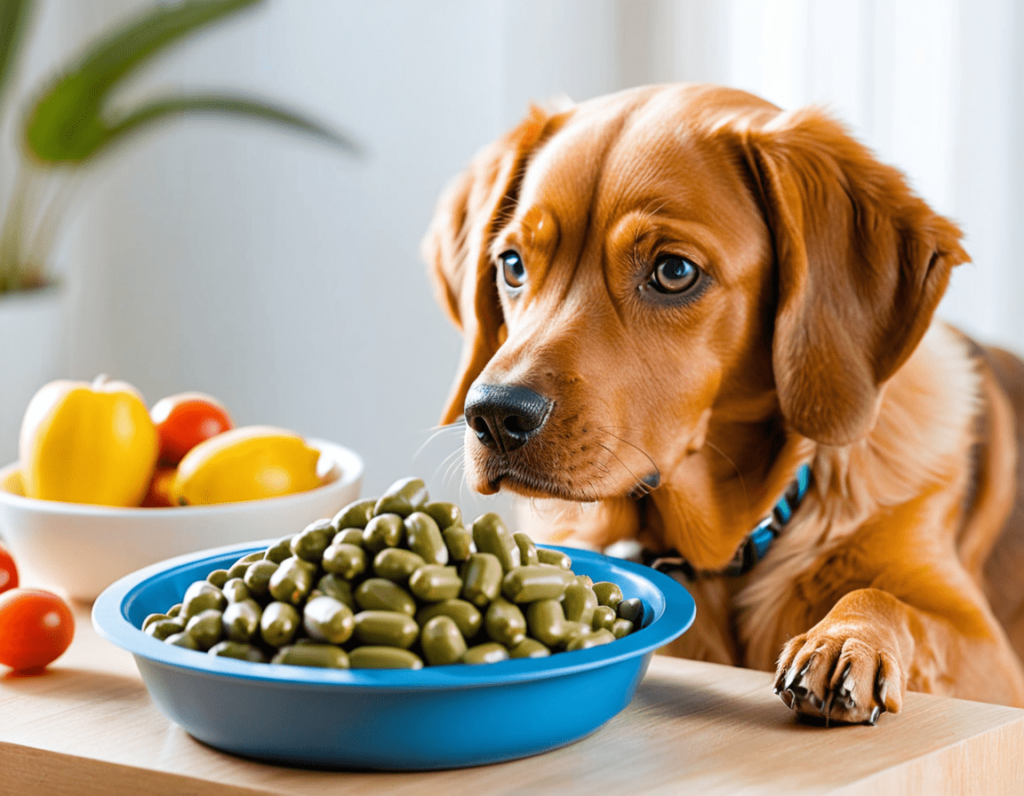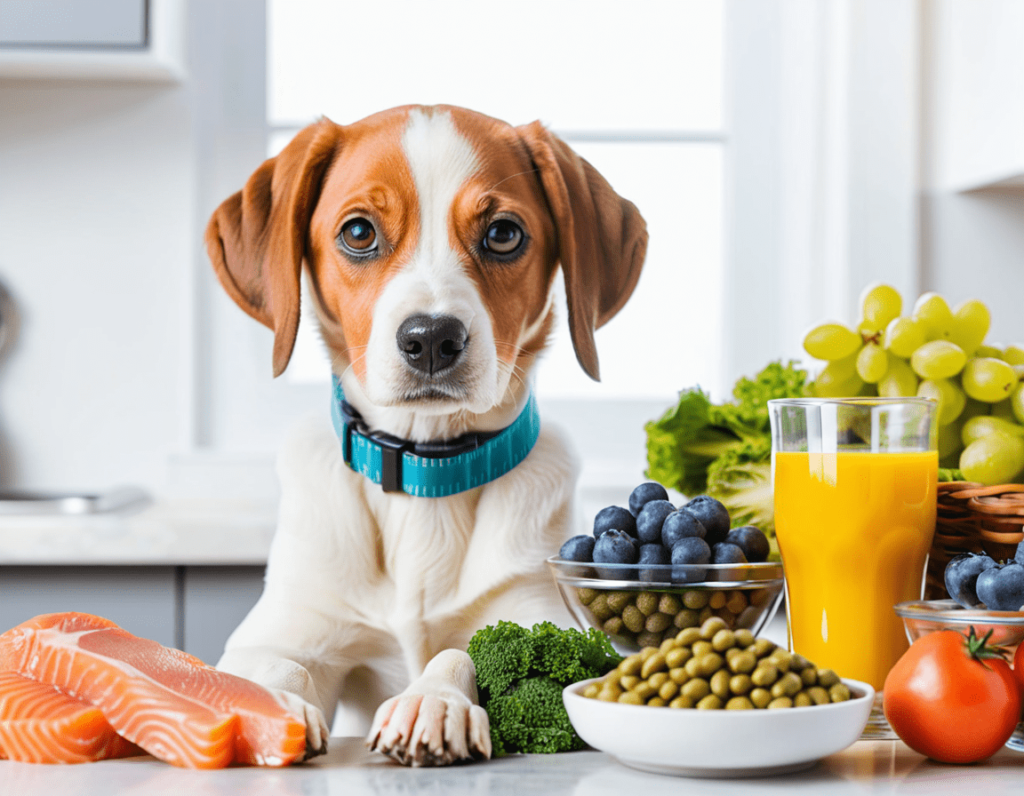Dog Nutrition and Diet:

When it comes to keeping our fur babies happy and healthy, dog nutrition is a big deal. As dog owners, we want our pups to be energetic, strong, and, let’s face it, to look super cute when they’re begging for treats! But with so much information (and misinformation) out there, figuring out what’s actually good for our dogs can feel as complex as rocket science.
Don’t worry! Here, we’ll break down dog nutrition and diet in a way that’s easy to understand—without the complex jargon or endless ingredient lists. And who knows, we might even throw in a couple of treats for you (the reader, not the dog).
Why Dog Nutrition Matters (It’s Not Just for Humans)
Let’s face it, your dog is probably your best friend (unless you have a cat too, then they share the title). Just like us, dogs need balanced nutrition to thrive. That means more than just a bowl of kibble here and there. What we feed them impacts everything: energy, mood, coat health, and even how much they shed all over your couch.
Here’s a quick look at why balanced nutrition matters for your dog:
Energy and Vitality: The right food keeps your pup active and less prone to those mid-day naps that last three hours.
Healthy Coat and Skin: Proper nutrients make that fur shiny and soft and may even reduce the dreaded “dog smell.”
Strong Muscles and Bones: Especially important for dogs that double as workout partners or have a love for long fetch sessions.
The Basics of a Balanced Dog Diet So, what exactly should go into your dog’s diet? Just like us, dogs need a balance of proteins, fats, carbs, vitamins, and minerals. Here’s the breakdown:

1. Protein: The Building Block
Dogs are carnivores by nature, so protein is a must. It helps with muscle growth, immune health, and overall development. Great protein sources include chicken, beef, and fish. Just remember, not every dog needs a diet as high in protein as a bodybuilder’s!
Funny Bone Alert: Want a dog that’s all bark and no bite? Then give them protein so they can flex those muscles… while still looking adorable, of course.
2. Fats: Not All Fat is Bad!
Fats are not the enemy; in fact, they provide energy and keep that coat gleaming. Look for healthy fats from fish oil or chicken fat. But watch the portions! No one wants a dog that looks like it’s auditioning for “Paw Watch.”
3. Carbs: Not Just for Humans
Yes, dogs can have carbs! They help with digestion and provide a steady source of energy. Whole grains like brown rice and oatmeal are good options. Avoid anything that sounds too processed or would look strange on your own plate (like too many fillers).
4. Vitamins and Minerals: The Finishing Touch
Think of vitamins and minerals as the little extras that keep your dog running smoothly. Look for foods with a mix of vitamins A, C, and E, as well as minerals like calcium and phosphorus. These help with everything from eyesight to bone strength.
To Grain or Not to Grain?
Grain-free diets are all the rage, but is it necessary? The truth is, unless your dog has a grain allergy, they’re usually just fine with grains in their diet. Most dogs tolerate grains well and even benefit from the extra fiber. But if your pup has a sensitive stomach, talk to your vet about grain-free options.
Humour Alert: If your dog goes gluten-free, remember they’ll probably expect a special shelf in the pantry for their “artisanal kibble.”
Wet vs. Dry Dog Food: Which is Better?
Both wet and dry foods have their perks:
Dry Dog Food: easier on the wallet, better for their teeth, and less messy.
Wet Dog Food: Higher moisture content (good for hydration) and often more appealing to picky eaters.
There’s no wrong choice here. Some pet parents mix both to give their dogs the best of both worlds. It’s like doggy surf-and-turf without the high price tag.
Most Common Foods That Are Actually Toxic for Dogs
Now, here’s where things get serious. There are certain foods that are a big no-no for dogs. Keep these out of paw’s reach at all times:
Chocolate: Delicious for humans, dangerous for dogs.
Grapes & Raisins: Harmless to us, toxic to them.
Onions & Garlic: They may love the smell, but these can cause serious health problems.
Choosing the Right Dog Food
When it comes to picking the perfect dog food, reading labels can feel like reading a novel.
Here are a few tips to keep things simple:
Check the Protein Source: Meat should be one of the first ingredients listed.
Avoid Fillers: Corn, wheat, and soy fillers are generally not needed.
Natural Over Artificial: Artificial flavours, colours, and preservatives aren’t good for anyone—especially your dog.

Homemade Dog Food: The Trendy Choice?
Making dog food at home has become pretty popular, but it’s not as easy as whipping up some pasta. Dogs have different nutritional needs than humans, so it’s important to follow recipes designed by pet nutritionists and to consult with your vet. If you’re really committed, go ahead and impress your dog with your cooking skills—but make sure the recipe is dog-safe!
Wrapping it Up: Your Dog’s Health is in Your Hands
Feeding your dog isn’t rocket science, but it does take a little planning. With the right balance of nutrients and some love, you can keep your dog as happy and healthy as possible. So go ahead, show them the love they deserve with a balanced diet—maybe they’ll even forgive you for that one time you made them wear the Halloween costume!
Quick laugh to end: Remember, a healthy dog is a happy dog, and a happy dog means fewer visits to the vet and more time playing fetch—or at least watching them run while you stay on the couch.
Tips to Keep in Mind When Feeding Your Dog
Stick to a Feeding Schedule: Dogs thrive on routine, so try to feed them at the same times each day. It also helps with potty training (and keeps surprises off your floor).
Portion Control: Measure out meals to avoid overfeeding. Most dog food bags have guidelines, but remember, your dog isn’t a “one-size-fits-all” eater—adjust portions as needed based on their size, age, and activity level.
Avoid Table Scraps: While those puppy eyes are hard to resist, table scraps are usually too fatty or salty for dogs. A little nibble here or there might be okay, but a steady diet of “people food” can upset their stomachs and lead to weight gain.
Fresh Water Always: A bowl of fresh water is essential, especially if you’re feeding dry food. Staying hydrated is crucial for digestion, cooling down on hot days, and generally keeping them healthy and hydrated.
Final Bark: Making Dog Nutrition Fun and Simple
Dog nutrition doesn’t have to be complicated or expensive. Just keep it simple: high-quality food, portion control, and plenty of love. And remember, every dog is different. Some might prefer a crunchy kibble, while others go wild for a softer, wet food. And who knows? Maybe your dog has a taste for fine cuisine, in which case you might just have a foodie on your hands.
When it comes down to it, all our pups really want is a belly rub, a cosy place to nap, and some good chow. So next time you’re pouring their food, just think of it as fuelling up your best friend for all the adventures to come. Here’s to happy, healthy dogs with wagging tails and full hearts!

Dog Nutrition and Diet FAQs:
If you’re still feeling a bit overwhelmed by dog nutrition, don’t worry—you’re not alone! Here are some frequently asked questions that might help clear things up:
1. How Often Should I Feed My Dog?
Answer: Most adult dogs do well with two meals a day—one in the morning and one in the evening. Puppies, however, need to eat more frequently, usually 3-4 times a day, due to their rapid growth and higher energy needs. For adult dogs, sticking to a consistent schedule can help with digestion and mood!
2. What Should I Look for on Dog Food Labels?
Answer: The first ingredient should ideally be a high-quality protein source, like chicken, beef, or fish. Avoid foods with a lot of fillers (like corn or soy), artificial preservatives, and flavors. Keep an eye out for terms like “complete and balanced,” which means the food has all essential nutrients your dog needs.
3. Is It Okay to Give My Dog Human Food?
Answer: Some human foods are safe for dogs (like plain cooked chicken, carrots, and green beans), but many are not. Chocolate, grapes, onions, garlic, and avocado can be toxic. When in doubt, skip the table scraps—most dog foods are nutritionally complete, so they don’t need extra treats from our plates.
4. Can My Dog Be Vegetarian or Vegan?
Answer: Dogs can technically survive on a vegetarian or vegan diet, but it’s tricky to make sure they get all the nutrients they need. Dogs are omnivores, so they naturally benefit from animal protein. If you’re considering a plant-based diet for your dog, consult a vet or pet nutritionist to ensure it’s safe and balanced.
5. What’s the Difference Between Wet and Dry Dog Food?
Answer: Dry dog food (kibble) is crunchy, less messy, and helps with dental health, while wet dog food (canned) has a higher moisture content, which can be helpful for hydration. Some dogs prefer one over the other, but you can also mix the two for a balanced meal.
6. Are grain-free diets better for dogs?
Answer: Grain-free diets have become popular, but unless your dog has a specific grain allergy, grains can actually be beneficial, providing fibre and energy. Consult your vet to determine if grain-free is right for your dog, as some recent studies suggest potential health risks in grain-free diets.
7. How Do I Know If My Dog Is Getting Enough Nutrients?
Answer: Signs of a well-nourished dog include a shiny coat, bright eyes, plenty of energy, and a healthy weight. If you notice changes in appetite, energy levels, or skin and coat condition, it may be time to evaluate their diet and consult a vet.
8. Is Homemade Dog food better?
Answer: Homemade dog food can be a good option, but it’s crucial to follow vet-approved recipes. Dogs have specific nutrient requirements that are different from humans, so winging it in the kitchen could lead to deficiencies. If you want to try homemade, make sure you’re following a balanced recipe with guidance from a professional.
9. How Can I Tell If My Dog Has a Food Allergy?
Answer: Common signs of food allergies include excessive itching, skin rashes, ear infections, and digestive issues like vomiting or diarrhea. If you suspect an allergy, consult your vet about an elimination diet to identify the allergen. Common culprits include beef, chicken, dairy, and wheat.
10. Should I Add Supplements to My Dog’s Diet?
Answer: Most high-quality dog foods are designed to be nutritionally complete, so supplements aren’t usually necessary. However, some dogs may benefit from specific supplements, like omega-3s for joint health or probiotics for digestion. Always check with your vet before adding any supplement to ensure it’s safe and beneficial.
11. How Much Water Should My Dog Drink Daily?
Answer: Dogs generally need about one ounce of water per pound of body weight each day. However, this can vary based on factors like activity level, weather, and diet. Always make sure fresh water is available, and if your dog isn’t drinking enough, try wetting their food or offering wet dog food to increase their water intake.
12. What’s the Best Way to Transition to a New Dog Food?
Answer: Transitioning should be gradual to avoid upsetting your dog’s stomach. Start by mixing a small amount of the new food with the old food, gradually increasing the new food over 7-10 days until it completely replaces the old food. This slow change helps your dog adjust to the new diet without digestive issues.
Final Thoughts
Feeding your dog doesn’t need to be overwhelming—start with the basics, and pay attention to how your dog responds to their diet. Their energy levels, coat health, and overall happiness are good indicators of whether they’re getting the nutrition they need. And if you’re ever in doubt, your vet is the best resource to guide you in keeping your furry friend as healthy and happy as possible!


